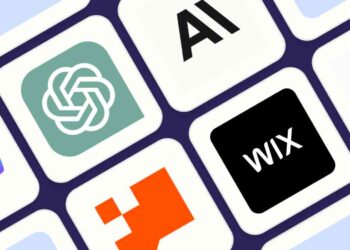As trends, user behaviors, and industry conditions shift, brands must adjust their content quickly to remain relevant and competitive.
Artificial intelligence (AI) provides powerful tools that allow marketers to analyze content performance in real time and make immediate adjustments to optimize outcomes.
These AI tools enable real-time data collection, analysis, and actionable insights, allowing you to pivot your content strategy with precision and speed.
In this post, we’ll explore how AI tools can help you analyze and adjust your content strategy in real-time, ensuring that your content remains optimized for performance and aligned with your goals.
1. Real-Time Content Performance Monitoring with AI
AI-driven analytics tools like Google Analytics and Hotjar can provide real-time insights into how your content is performing across various platforms. These tools analyze user interactions, such as clicks, time on page, bounce rates, and conversions, and provide instant feedback on what’s working and what needs adjustment.
How AI helps monitor content performance in real-time:
- Tracks key performance metrics (KPIs) such as engagement, traffic, and conversions as they happen.
- Analyzes user behavior to determine which content formats and topics are resonating most with your audience.
- Identifies sudden changes in traffic or engagement, allowing you to adjust content strategy immediately.
- Provides heatmaps and session recordings to visualize how users interact with your content.
For example, if AI tools detect a spike in bounce rates for a particular blog post, you can make real-time adjustments to improve the content’s relevance or optimize the call to action (CTA) for better engagement.
2. Adjusting Content Based on Real-Time SEO Trends
SEO is a critical component of any content strategy, but search trends can change rapidly. AI tools like Surfer SEO and Clearscope provide real-time insights into trending keywords and search queries, allowing you to adjust your content strategy to align with the latest SEO trends.
How AI adjusts content for SEO in real-time:
- Monitors search engine results pages (SERPs) for fluctuations in keyword rankings and search trends.
- Analyzes top-performing content for specific keywords and recommends real-time adjustments to your existing content.
- Suggests additional keywords or phrases to target based on real-time search behavior.
- Provides recommendations for optimizing on-page SEO elements like meta descriptions, headings, and keyword density.
For instance, if a specific keyword starts gaining traction, AI can recommend updating your content to include that keyword, ensuring that your content ranks higher in real-time searches.
3. Personalizing Content for User Segments in Real-Time
Personalization is key to increasing engagement and conversion rates. AI tools like Dynamic Yield and Optimizely use real-time data to personalize content for different audience segments, ensuring that each visitor receives the most relevant content based on their behavior and preferences.
How AI personalizes content in real-time:
- Tracks user behavior (e.g., clicks, page visits, time spent) to identify individual preferences and interests.
- Dynamically adjusts content recommendations, images, and CTAs based on user segmentation in real time.
- Delivers personalized content experiences across different channels, such as email, social media, and website pop-ups.
- Uses machine learning to continuously refine personalization strategies, improving relevance and engagement over time.
For example, if a returning user frequently engages with certain product categories, AI can automatically recommend similar products or content in real time, increasing the chances of conversion.
4. Optimizing Content for Different Channels in Real-Time
Each digital channel—whether it’s social media, email, or your website—requires a different content approach to maximize engagement. AI tools like Hootsuite and Buffer allow you to monitor how your content is performing across various channels in real-time, helping you make immediate adjustments to improve reach and engagement.
How AI optimizes content for different channels in real-time:
- Analyzes content performance metrics across multiple platforms (e.g., social media, email, blogs) and suggests adjustments to boost engagement.
- Recommends content formats and messaging tailored to the specific preferences of each channel’s audience.
- Tracks social media trends and provides real-time insights into which posts are performing well, allowing you to adjust your strategy accordingly.
- Automates content scheduling and distribution to ensure your content reaches the right audience at the right time.
For instance, if AI detects that a certain type of social media post is performing better than others, you can adjust your content calendar to publish more of that type of content in real time.
5. Adapting Content Strategy Based on Competitor Performance
Staying ahead of the competition is crucial in content marketing. AI tools like SEMrush and Ahrefs can monitor your competitors’ content strategies and provide real-time insights into what’s working for them. This allows you to adjust your own content strategy to stay competitive.
How AI helps analyze competitor content in real-time:
- Tracks competitor content performance, such as keyword rankings, backlinks, and social media engagement.
- Identifies content gaps and opportunities by analyzing competitor strategies and highlighting areas where you can outperform them.
- Provides real-time recommendations for improving your content based on what’s working for competitors.
- Monitors competitor website traffic and keyword rankings, allowing you to adjust your SEO strategy to stay competitive.
For example, if AI tools identify that a competitor’s blog post is gaining traction for a high-value keyword, you can adjust your content strategy to create a more in-depth, optimized version to outrank them.
6. Making Data-Driven Content Adjustments in Real-Time
AI tools provide real-time data analysis that helps you make informed decisions about your content strategy. Platforms like Tableau and Power BI can visualize your content performance metrics, providing actionable insights that allow you to adjust your strategy on the fly.
How AI facilitates data-driven content adjustments:
- Analyzes key performance indicators (KPIs) such as traffic, engagement, and conversions in real-time to identify areas for improvement.
- Visualizes data through customizable dashboards, making it easy to spot trends and adjust your strategy accordingly.
- Provides predictive analytics to forecast future performance based on current trends, helping you stay ahead of changes.
- Recommends specific adjustments, such as tweaking content headlines, CTAs, or visual elements, to boost performance based on real-time data.
For instance, if AI analysis shows a dip in engagement on a particular blog post, you can immediately update the content with new information, add multimedia elements, or optimize for better readability to improve performance.
Final Thoughts
AI-powered tools are revolutionizing the way content strategies are built, analyzed, and adjusted in real-time. By providing instant insights into content performance, user behavior, and market trends, AI enables marketers to make data-driven adjustments that optimize outcomes across channels. Whether you’re personalizing content for different user segments, responding to changing SEO trends, or adapting to competitor strategies, AI allows you to remain agile and responsive in an ever-changing digital landscape.
If you’re ready to take your content strategy to the next level, integrating AI tools for real-time analysis and adjustments will help ensure your content stays relevant, engaging, and effective.








